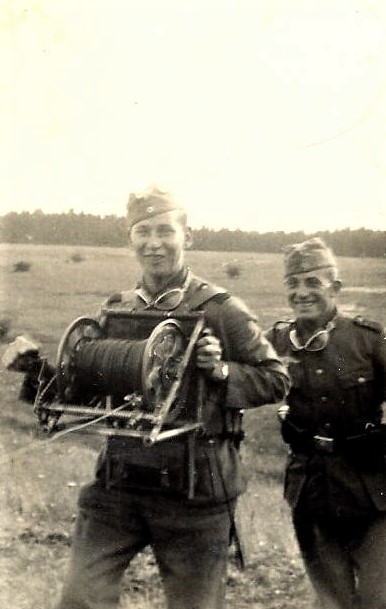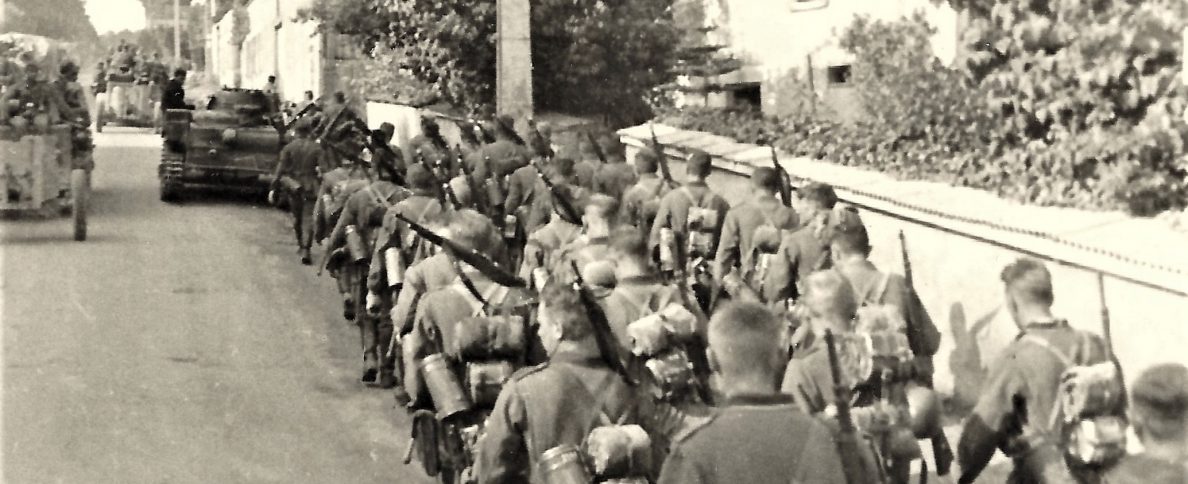A well-needed rest – it’s heavy work invading neighboring countries – for a Nachrichtenstaffel (signals squad) of a Feldhaubitzbatterie (field howitzers battery). The soldier on the left is darning his socks while cooling his feet in a bucket of water. It’s easy to imagine the blisters on his feet. His friend is having a drink of something, while another guy is looking for something in a bag. The rest of the squad is just resting. Most of them wear their helmets, something that was required when in a combat zone.
Their vehicle is a leichte Fernsprechwagen Nf.2 (light telephone wagon), which consisted of the Vorderwagen (forward or anterior wagon) and the Hinterwagen (rear wagon). It was towed by four horses, as the majority of German artillery units were horse-drawn. Two Nf. 2 were part of a Feldhaubitzbatterie for communications between the gun crews, the forward observers, and the headquarters unit.

While radios were easier to deploy, field telephones were safer. They couldn’t be located or listened in on by enemy signals intelligence units (unless the phone line was tapped into), or affected by electronic countermeasures. Radios could have limited range due to terrain, humidity, etc. They were rather fragile and needed batteries. Still, radios were preferred when the advance was rapid, while phones were more suitable when the advance was slow or in static situations.



